Abstract
1. A quantitative analysis of the time-dependent component of outward membrane current in atrial wall trabeculae from Rana catesbeiana and Rana ridibunda has been carried out using a double sucrose gap technique. 2. Separation of the different components of delayed outward current was hampered by the sigmoid onset of one of the outward current systems ixfast and by the development of potassium ion accumulation which prevented current activation from reaching a steady state at positive membrane potentials. Semilogarithmic analysis of positive current decay tails recorded immediately following square voltage clamp depolarizations was therefore used to separate the two membrane conductance components ixfast and ixslow and the third component, attributable to potassium ion accumulation, which was almost invariably present in the tails. 3. It is shown that inaccuracies in this method of semilogarithmic separation of components caused by visual assessment of the i3 (accumulation) line are minor compared with the large changes in the time constants of ixfast and more especially of ixslow which would result from ignoring the potassium accumulation component. 4. Such semilogarithmic separation of the three components of outward current gave separate activation curves for each of the two membrane conductance components, ixfast and ixslow. 5. Measurement of 'total' activation curves in which all components of outward current were represented could be made more easily and fairly reliably. The position and shape of these activation curves on the voltage axis were found to closely resemble those obtained by three component separation. It is therefore suggested that such a simplified analysis reflects the properties of the individual currents sufficiently well for it to be of use in preliminary studies of, for example, drug action. 6. The kinetic properties of the atrial outward currents have been investigated over a wide potential range. Because of the presence of potassium ion accumulation, an indirect method of obtaining the average value of 1/gamma for outward current decay at negative potentials had to be employed. 7. It is shown that some degree of inward-going rectification is associated with the outward current systems of frog atrium. 8. The possible reasons for the differences between the analysis presented here and those presented earlier by us (Brown & Noble, 1969a, b) and by Ojeda & Rougier (1974) are discussed.
Full text
PDF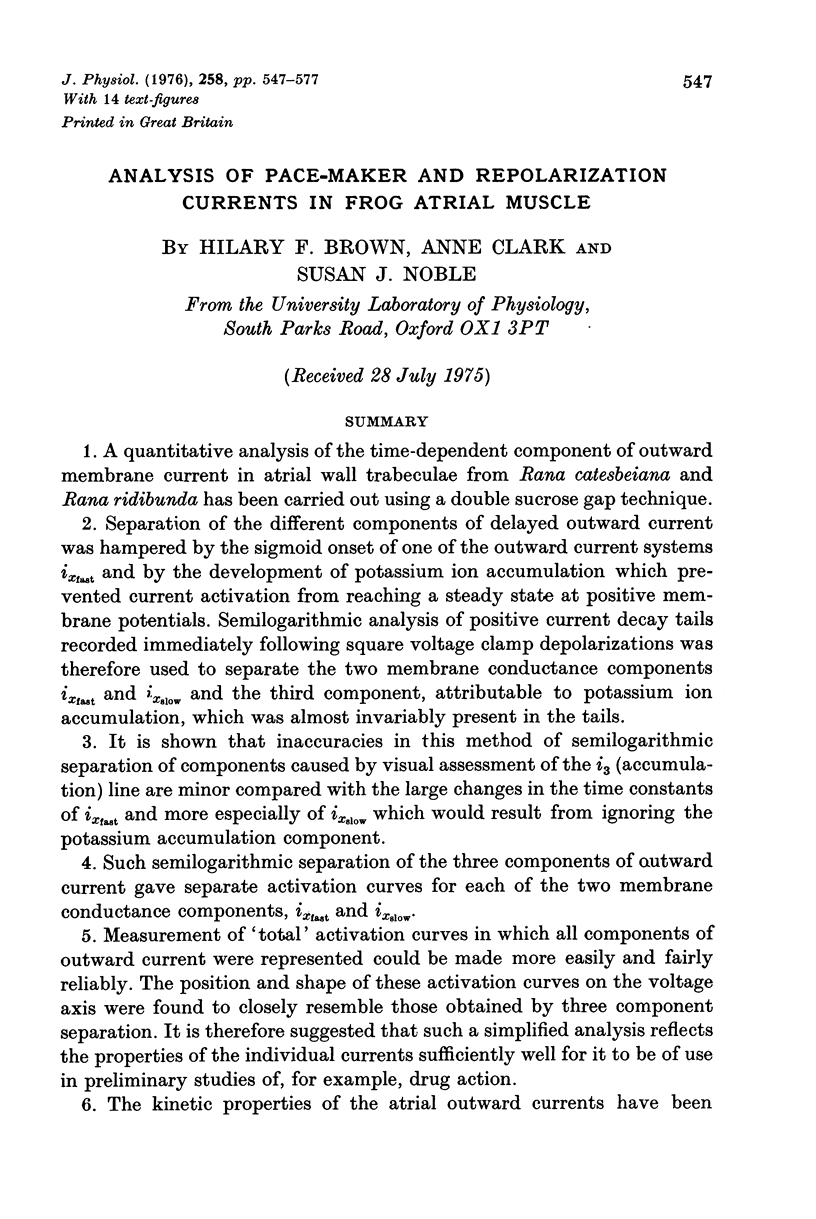
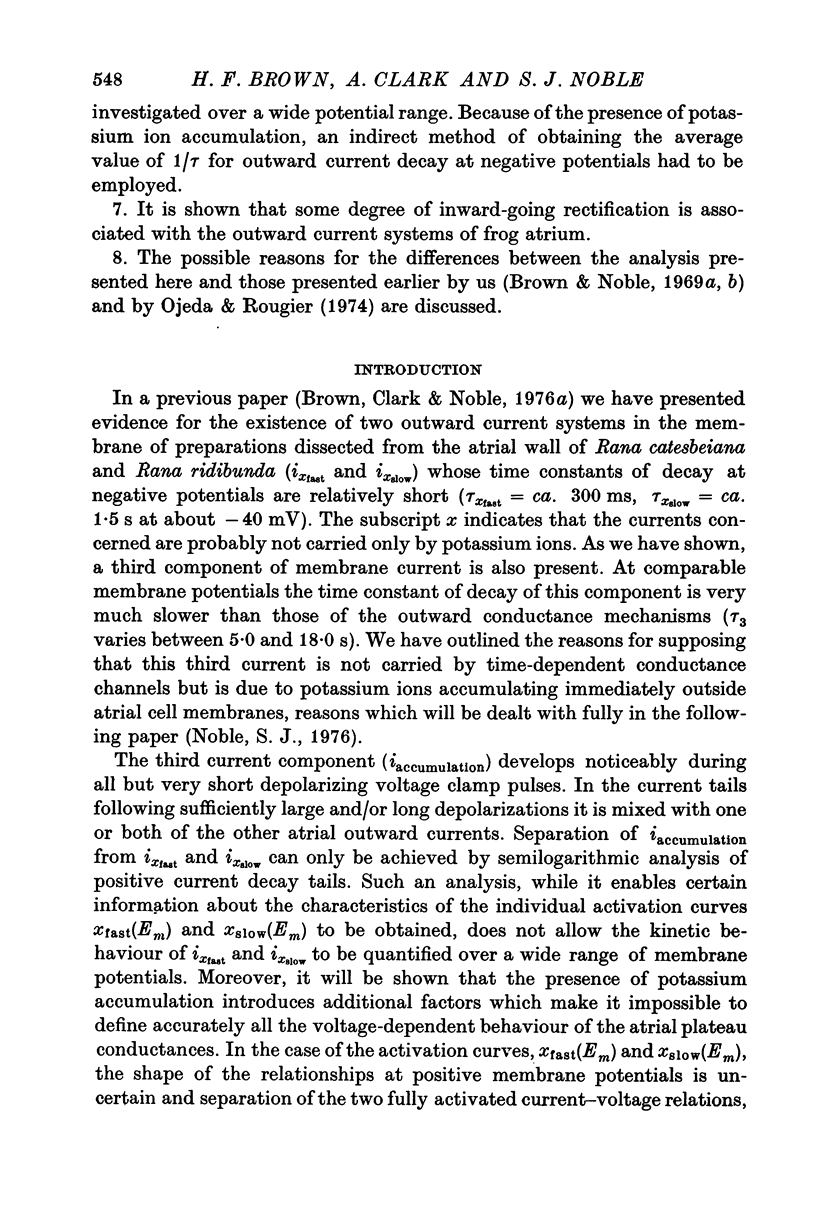
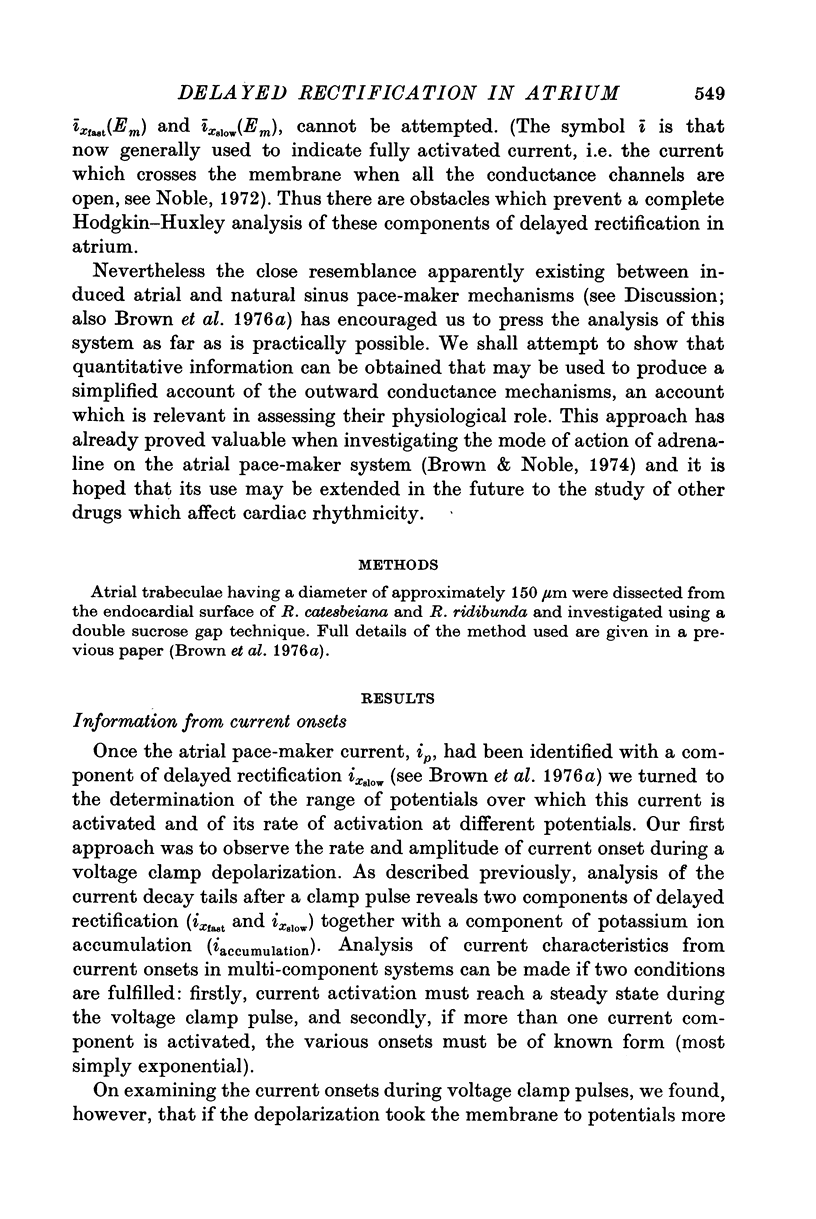
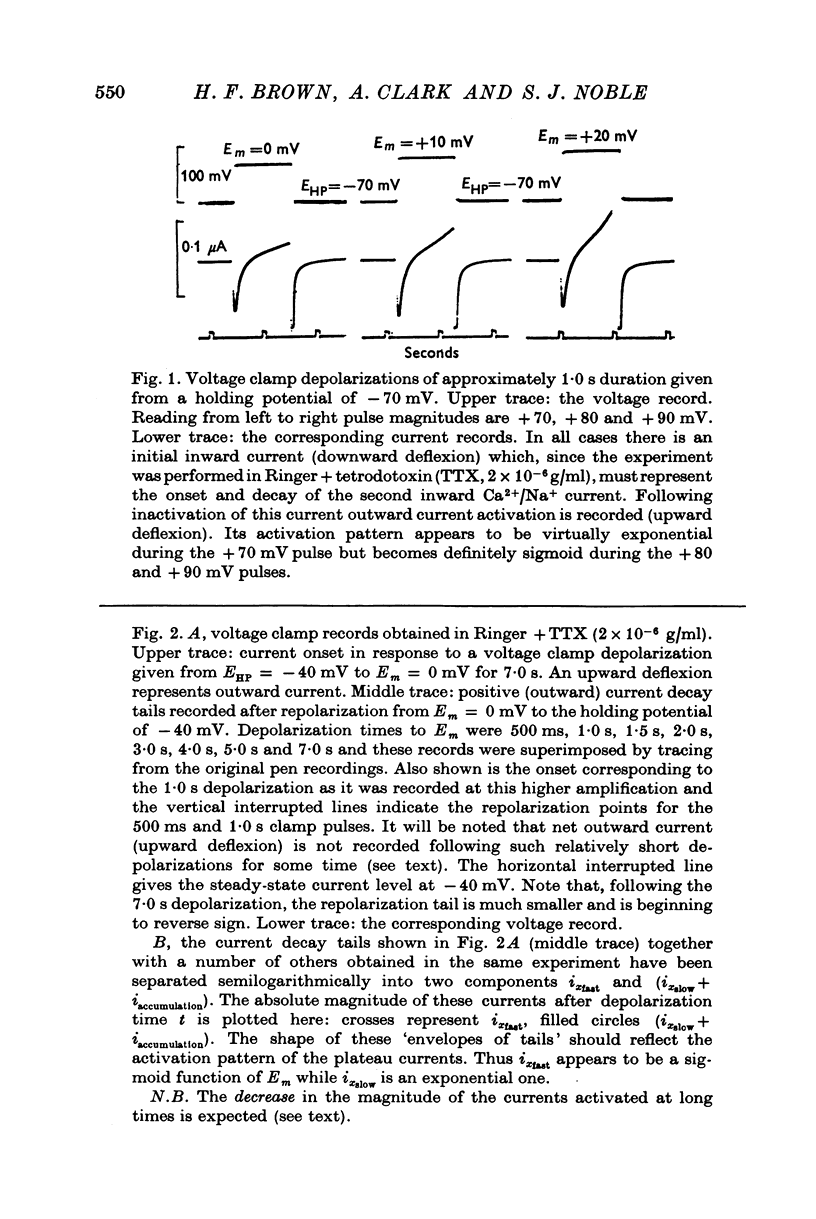
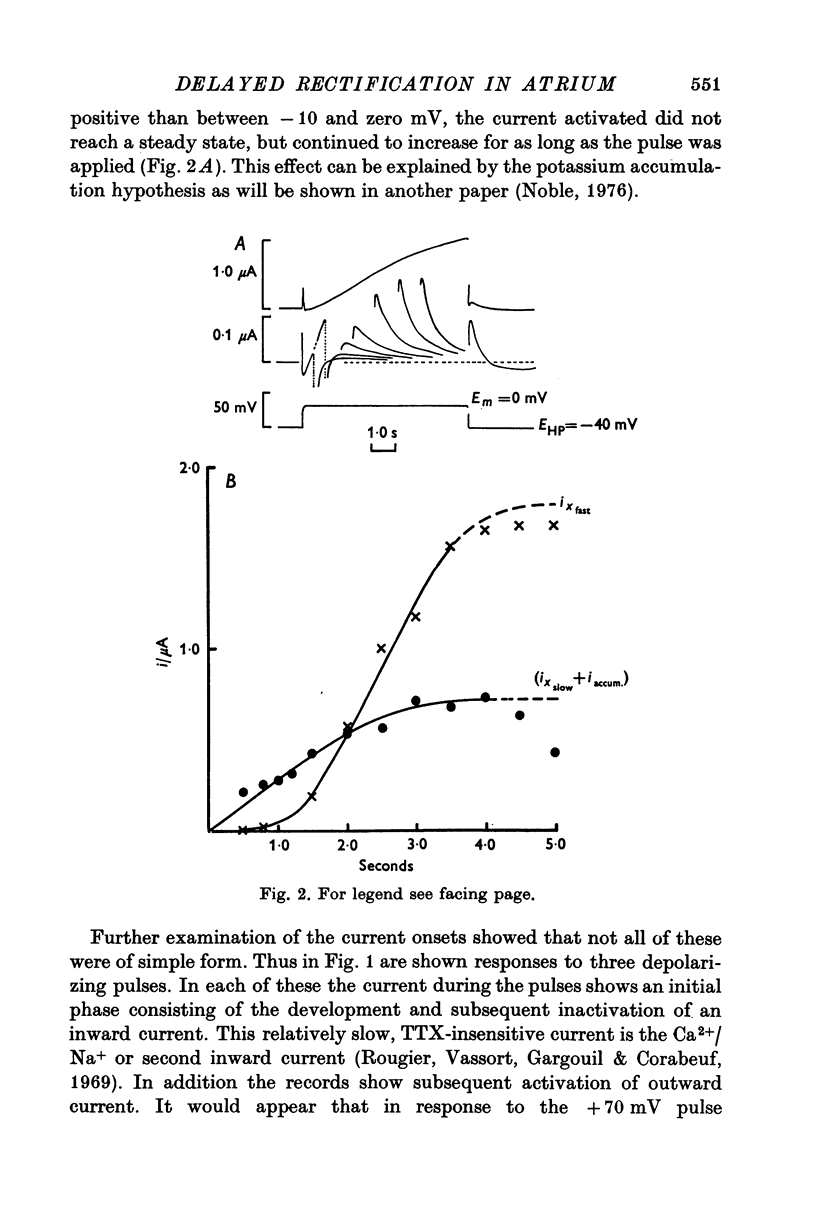
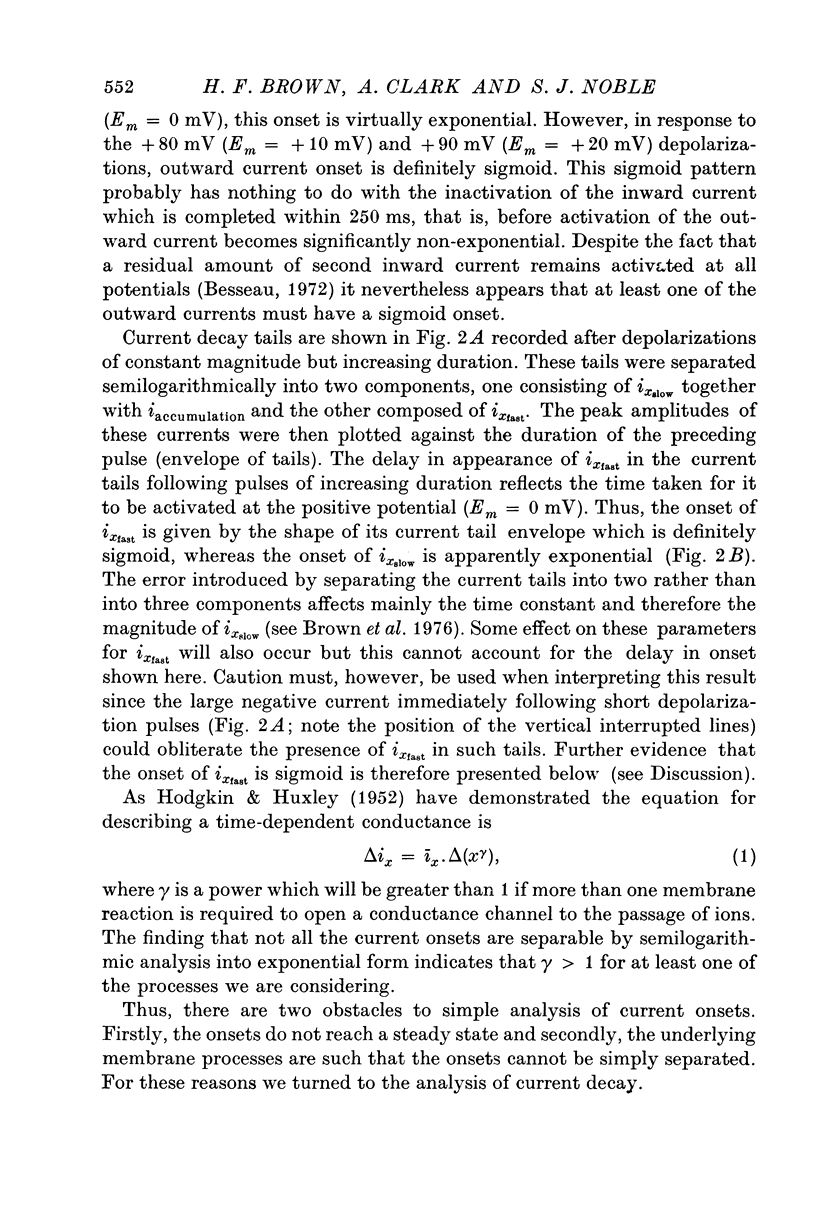
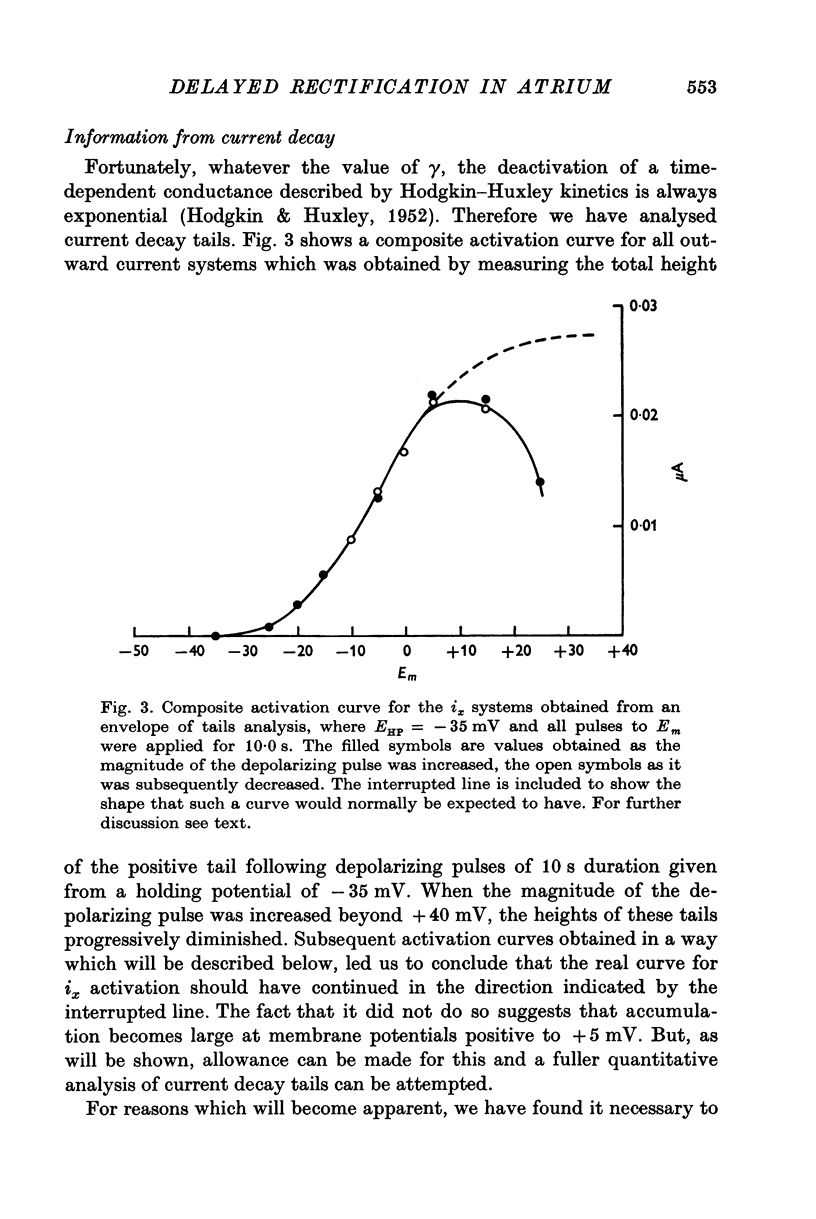
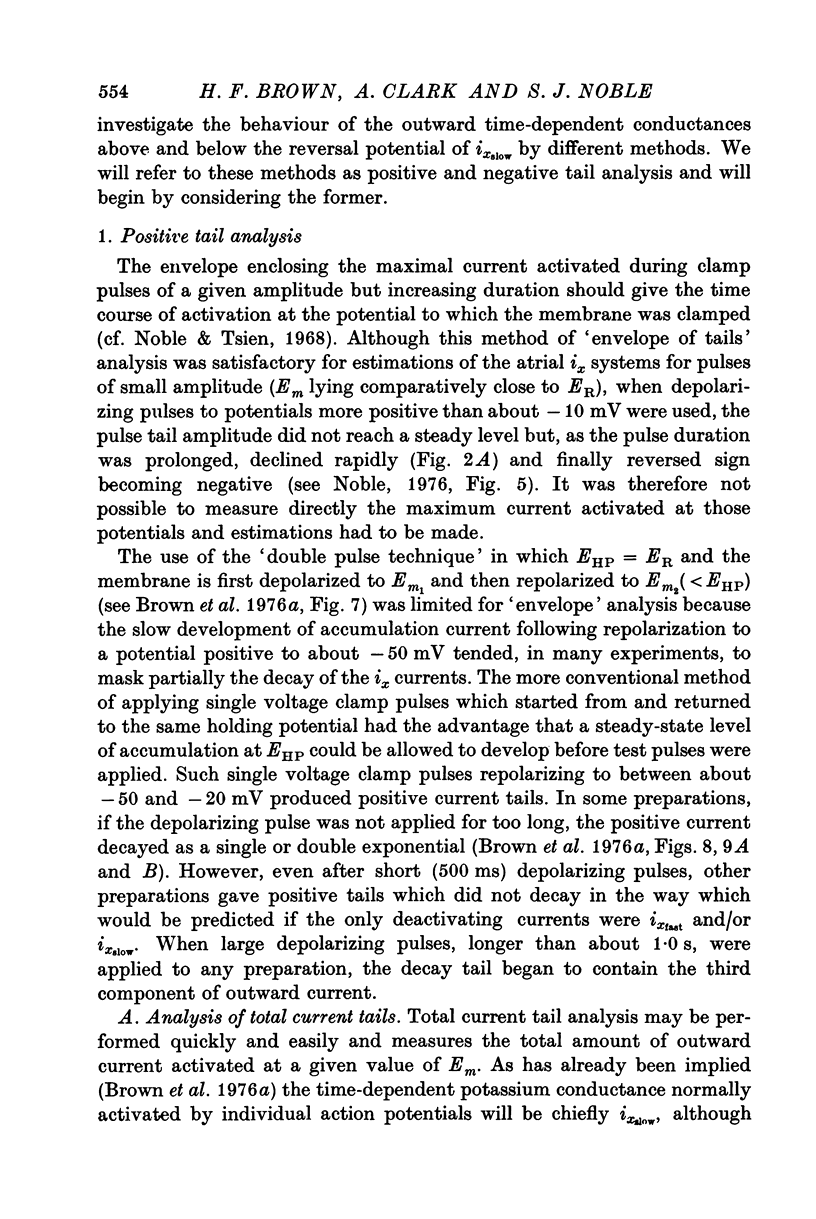

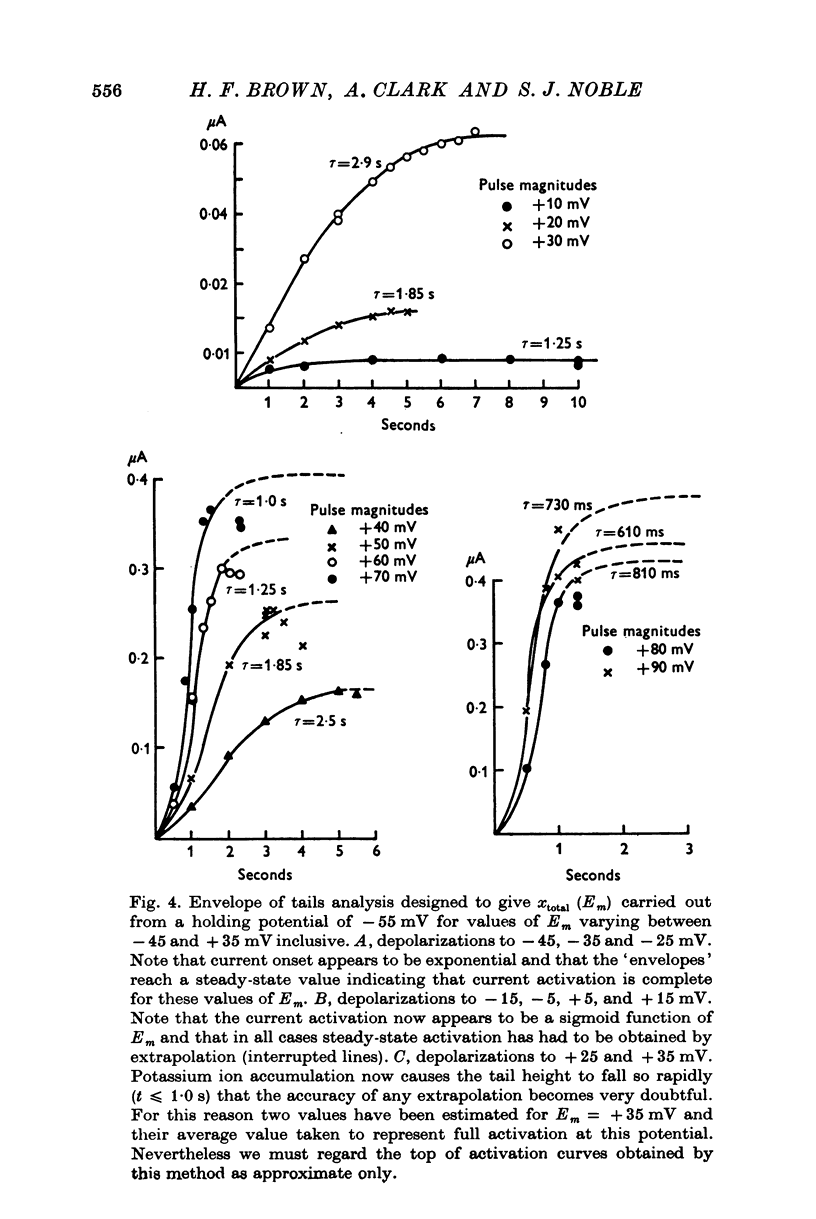
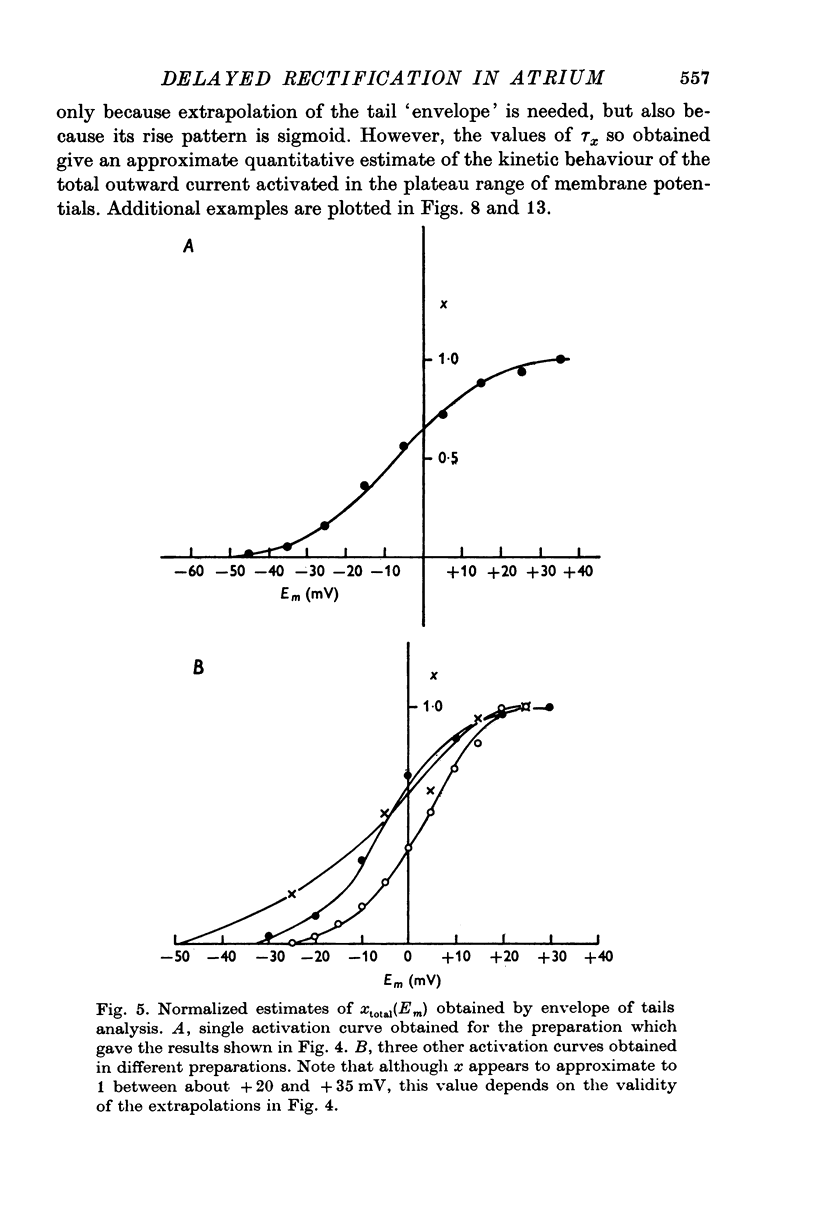
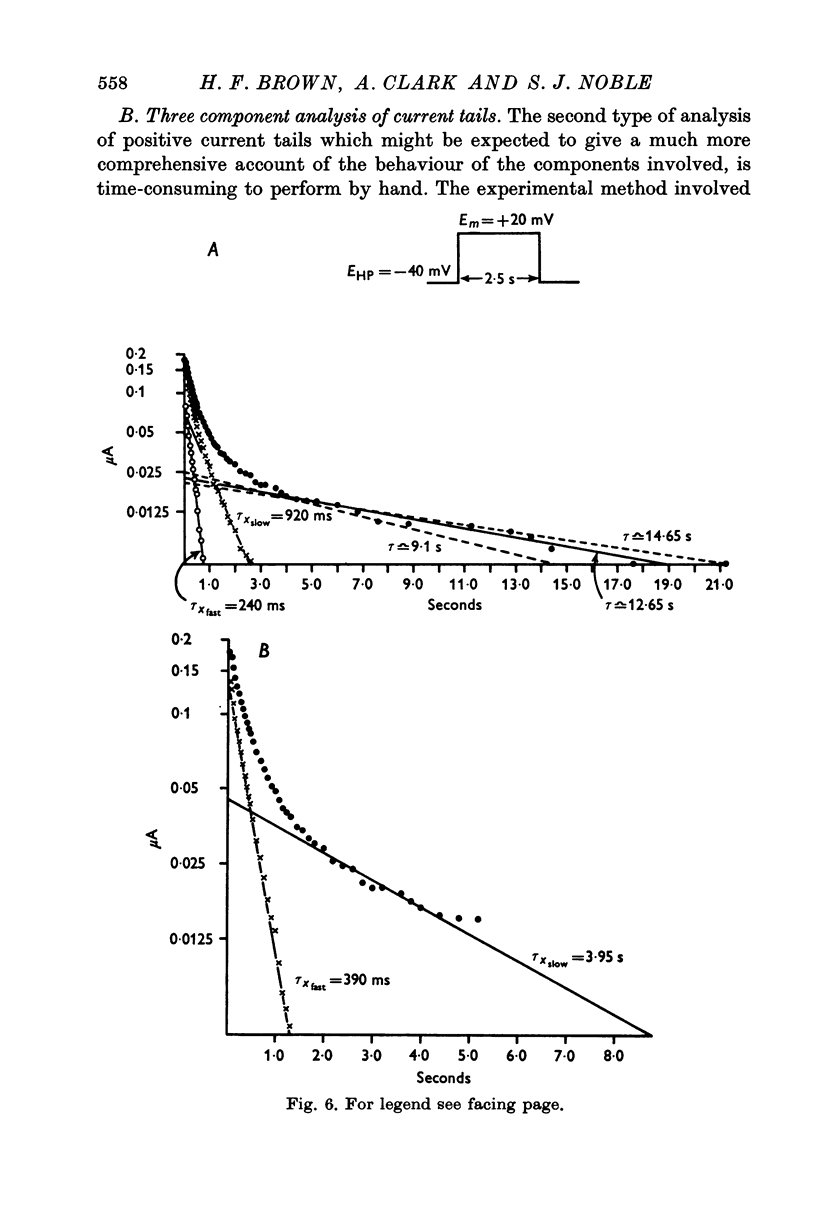
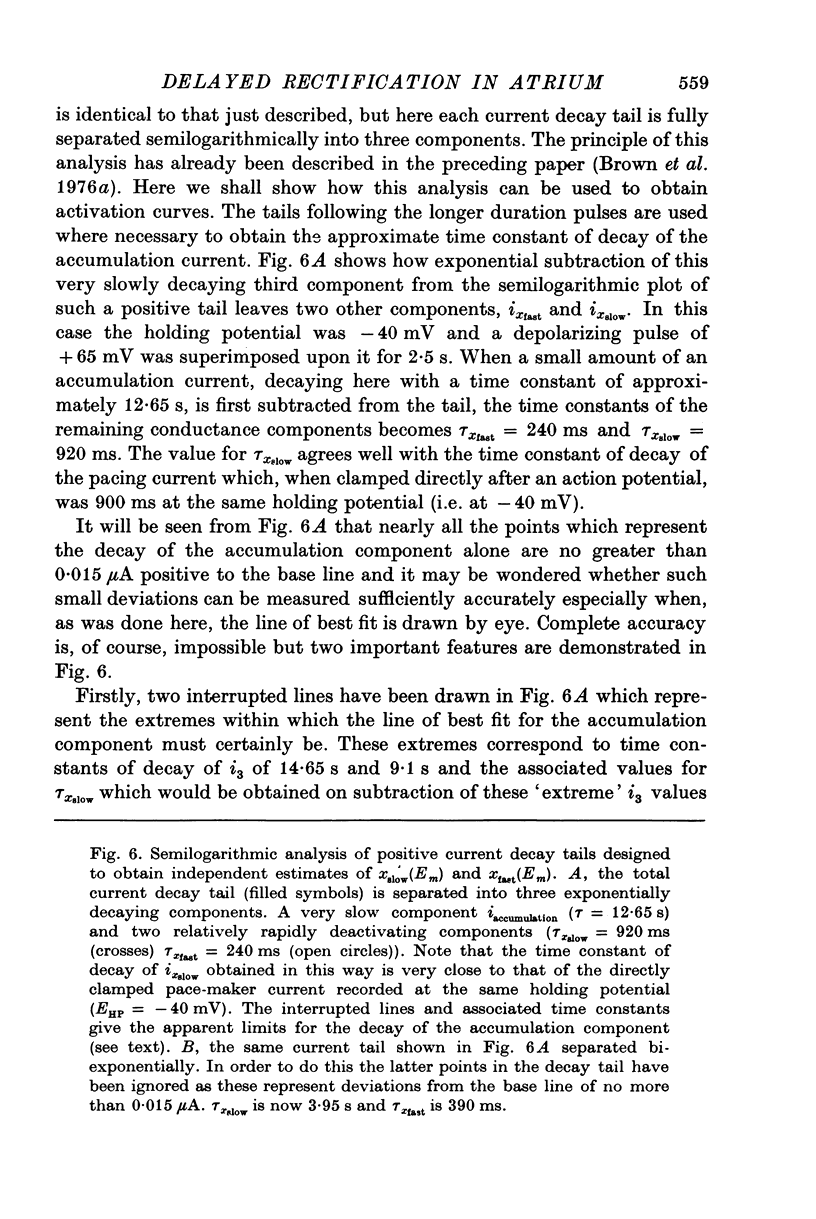
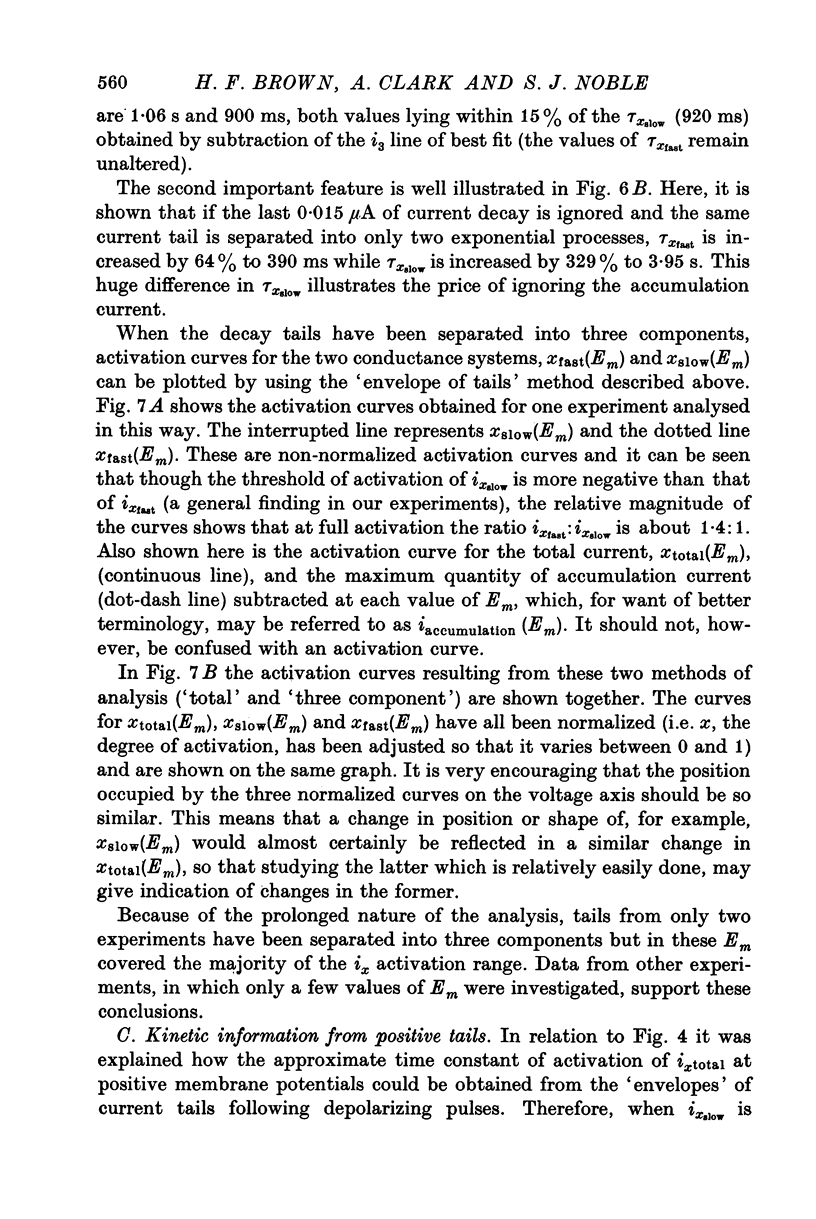
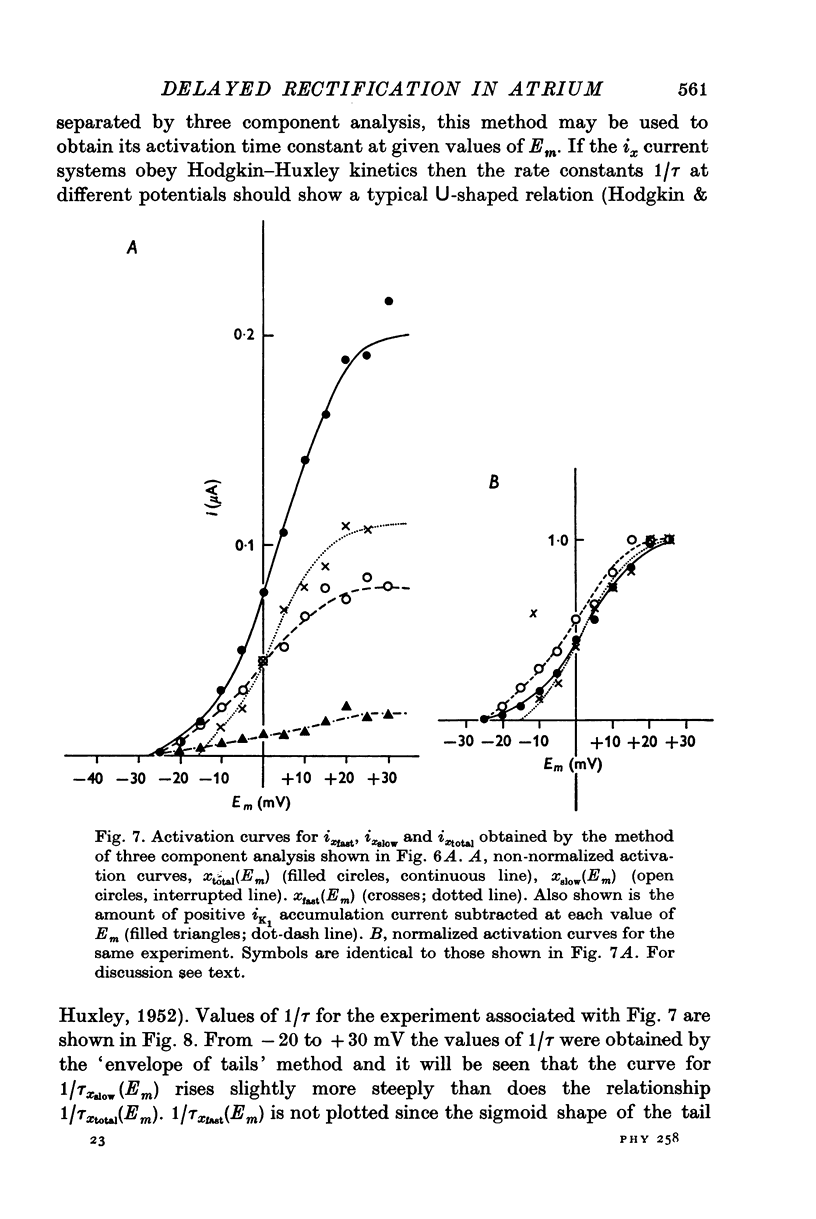
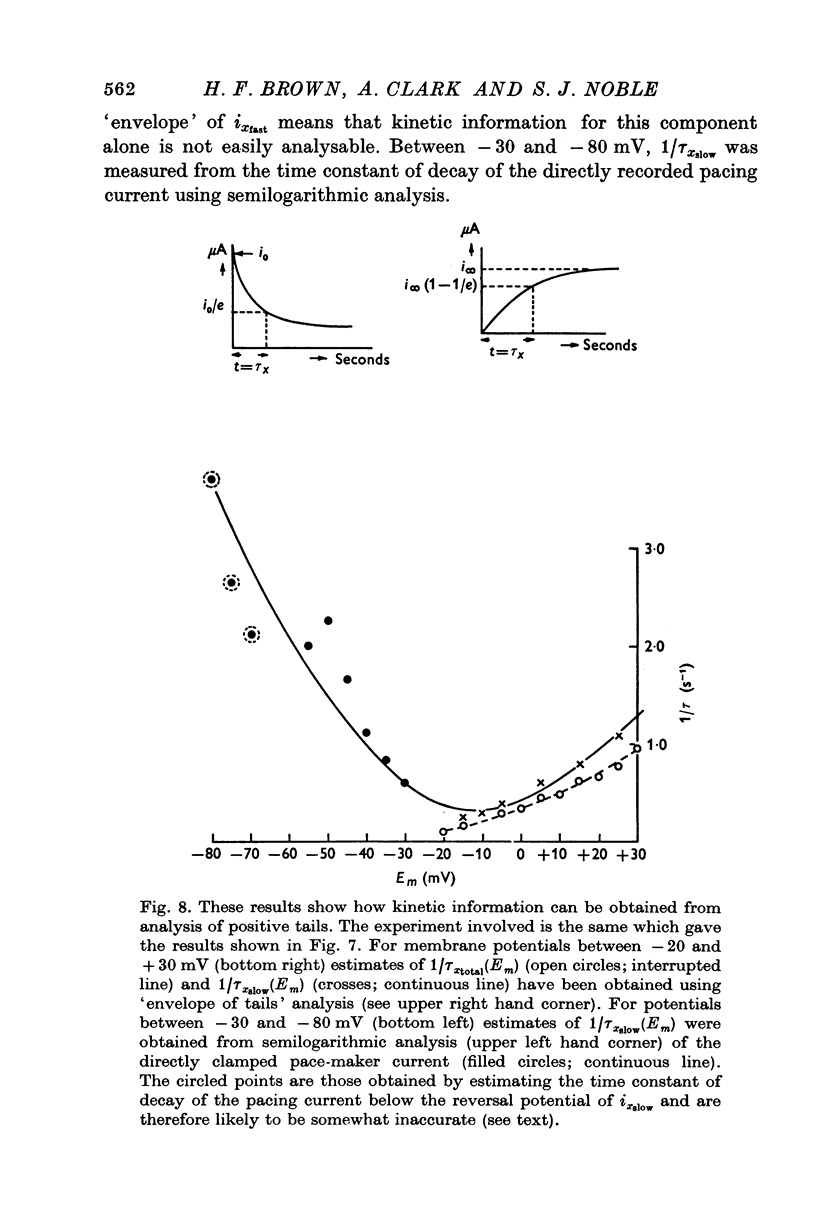
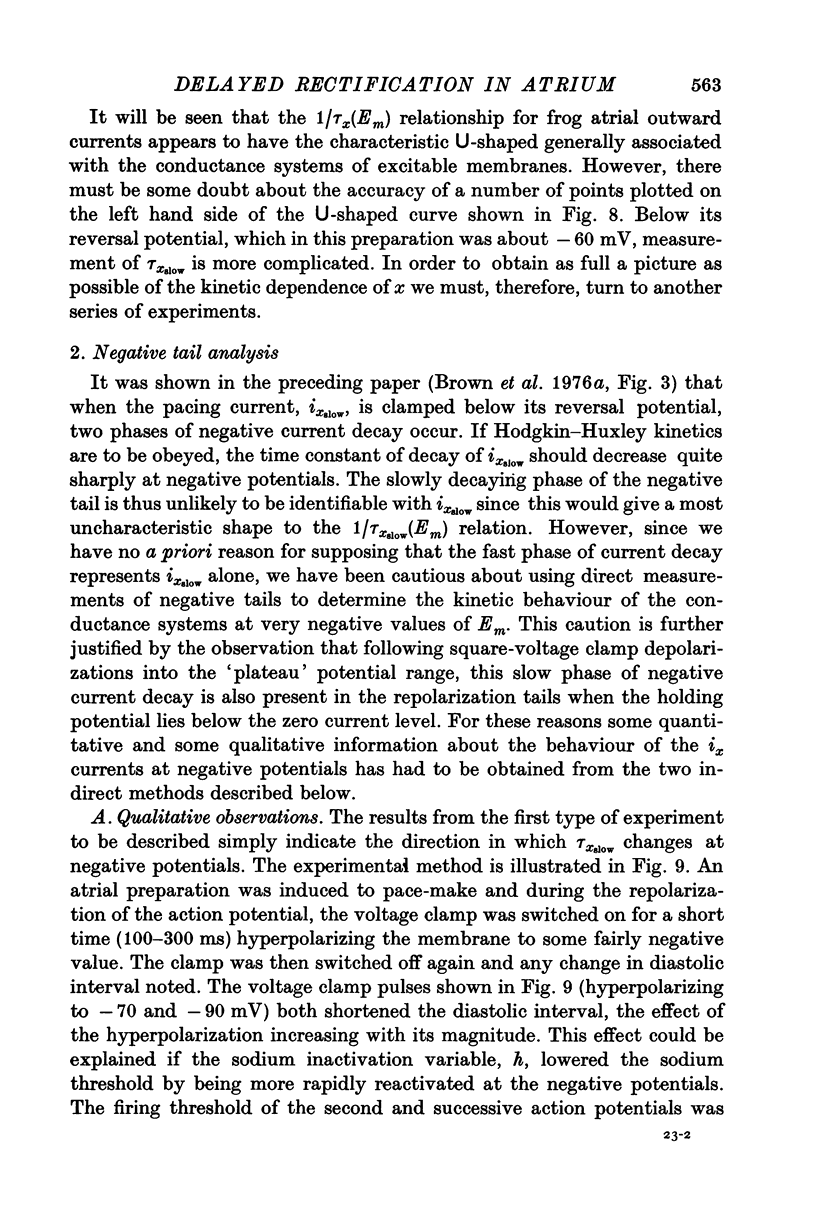
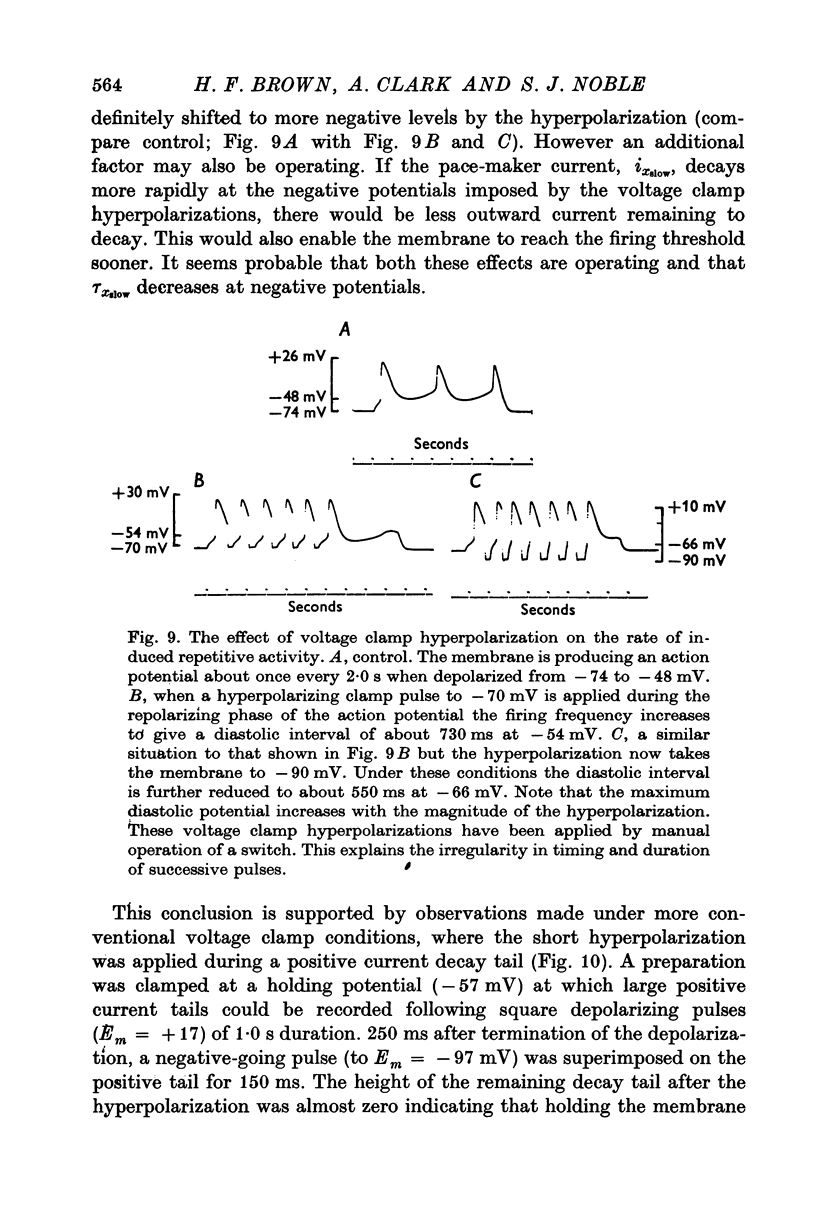
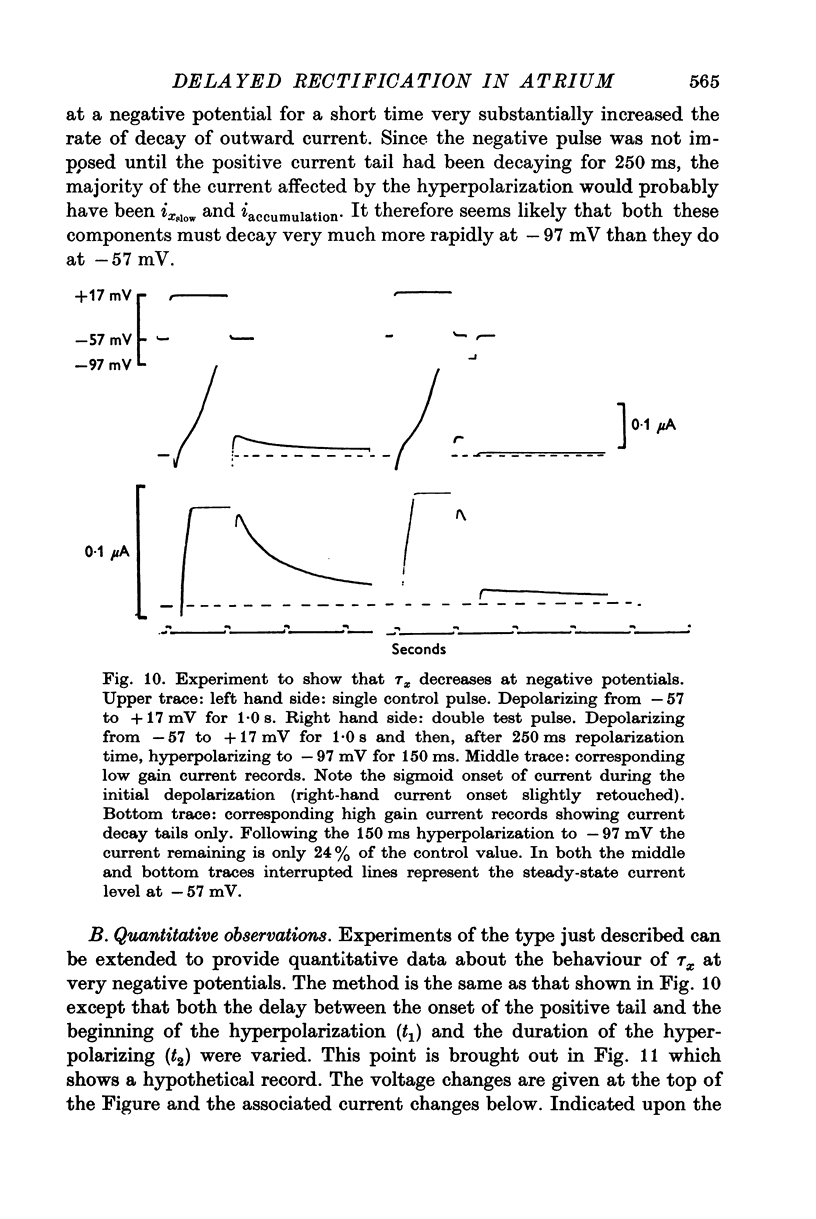

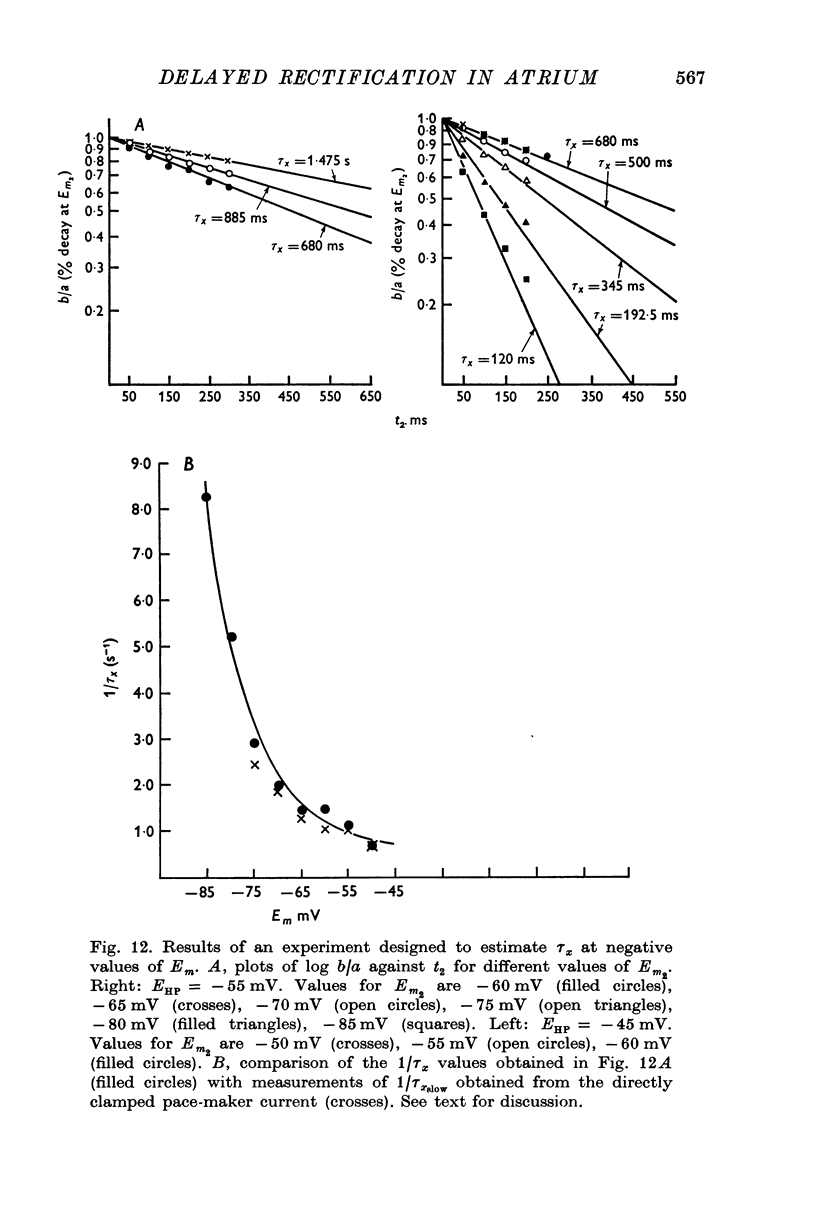
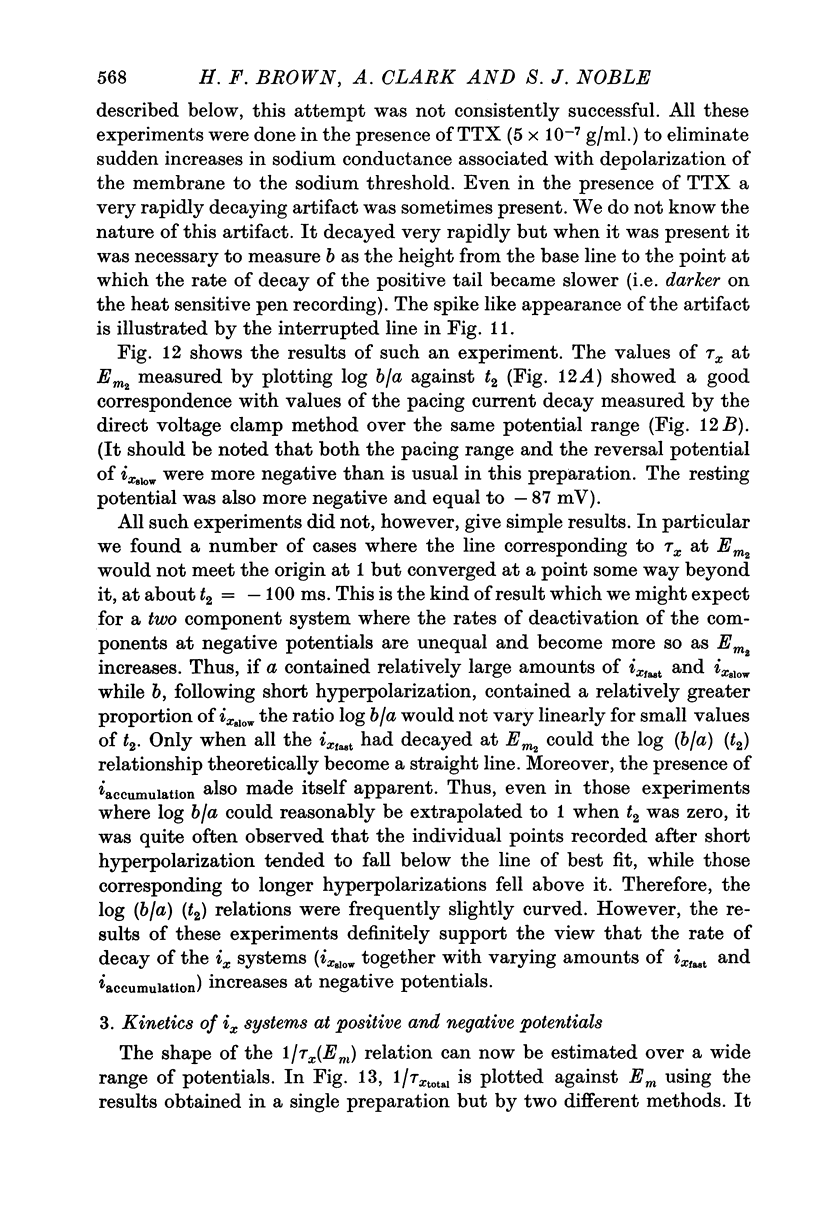
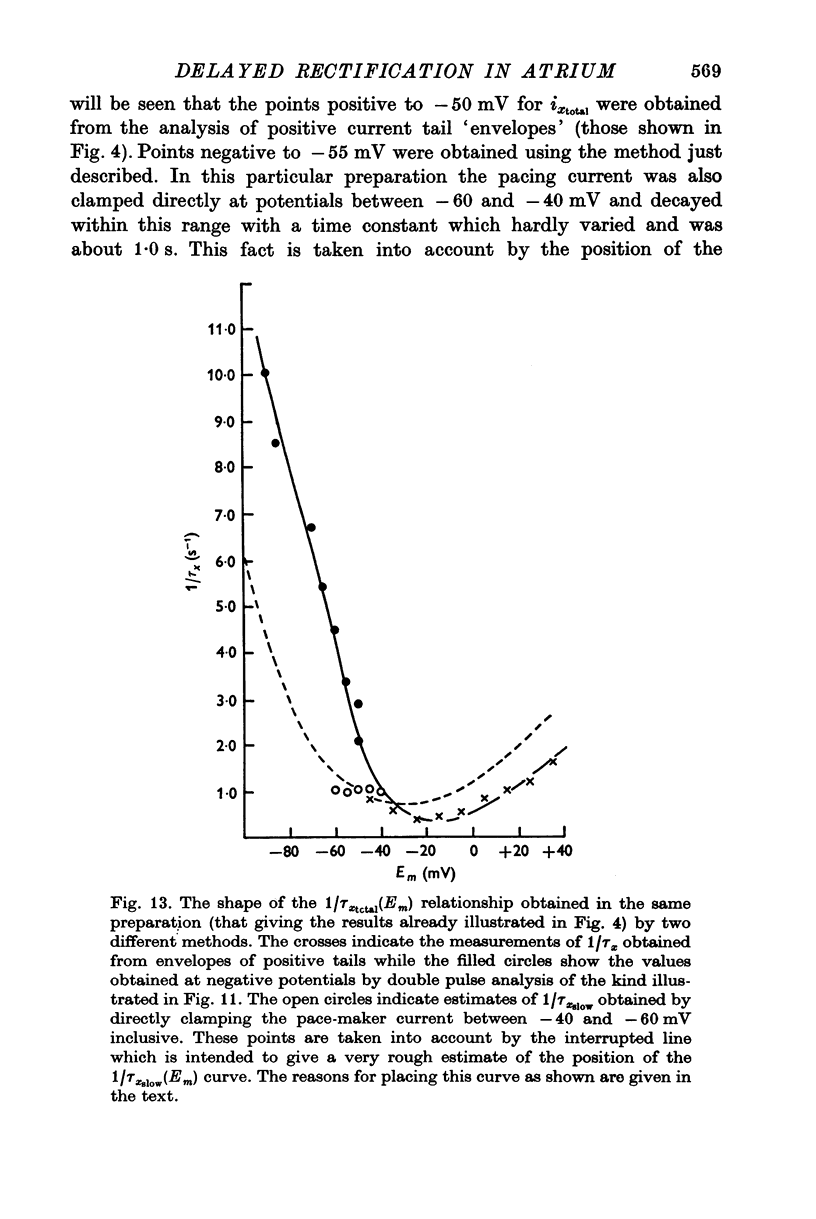
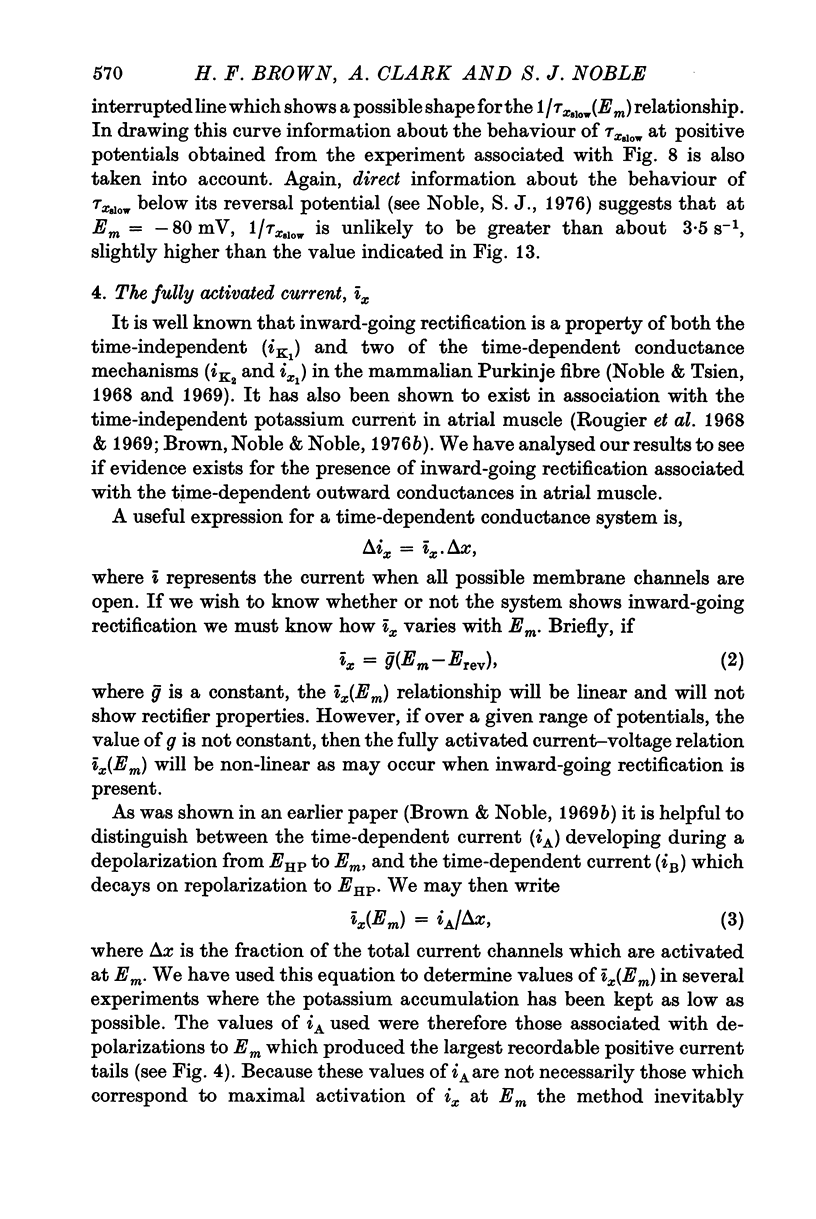
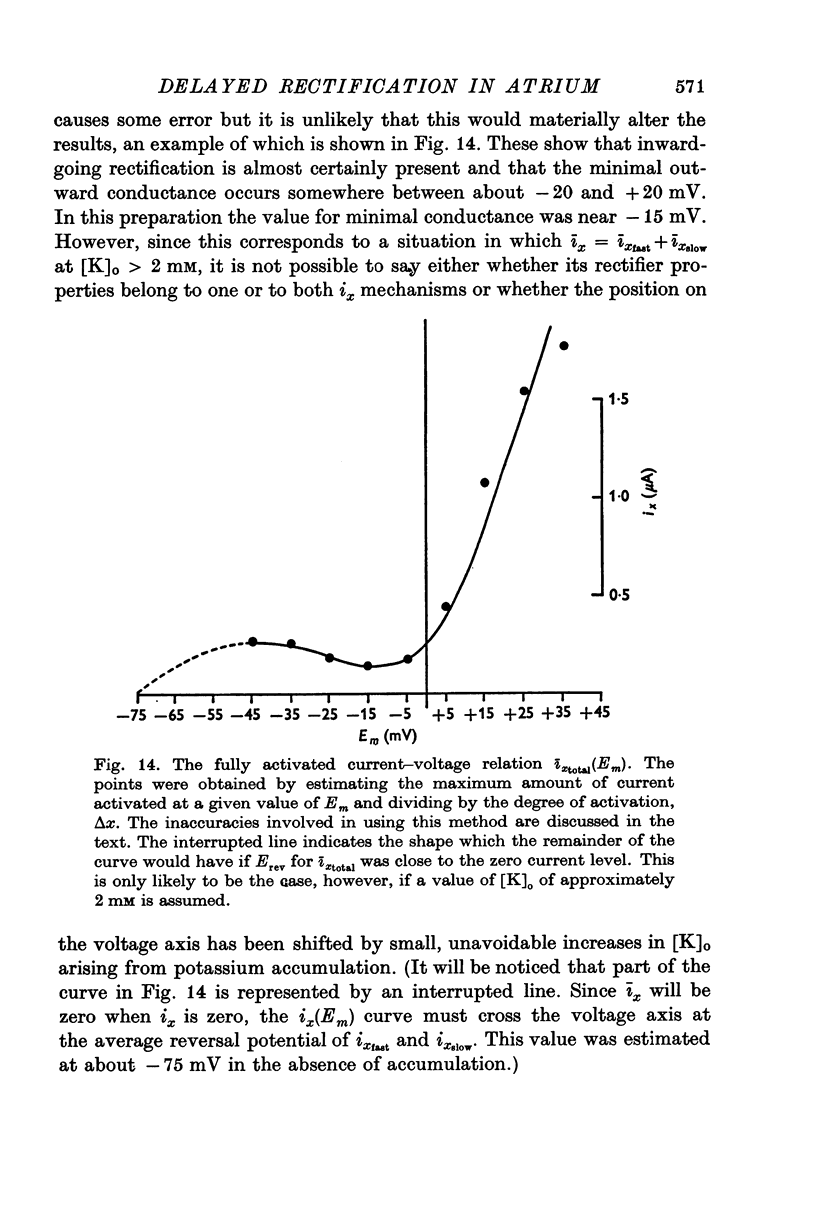
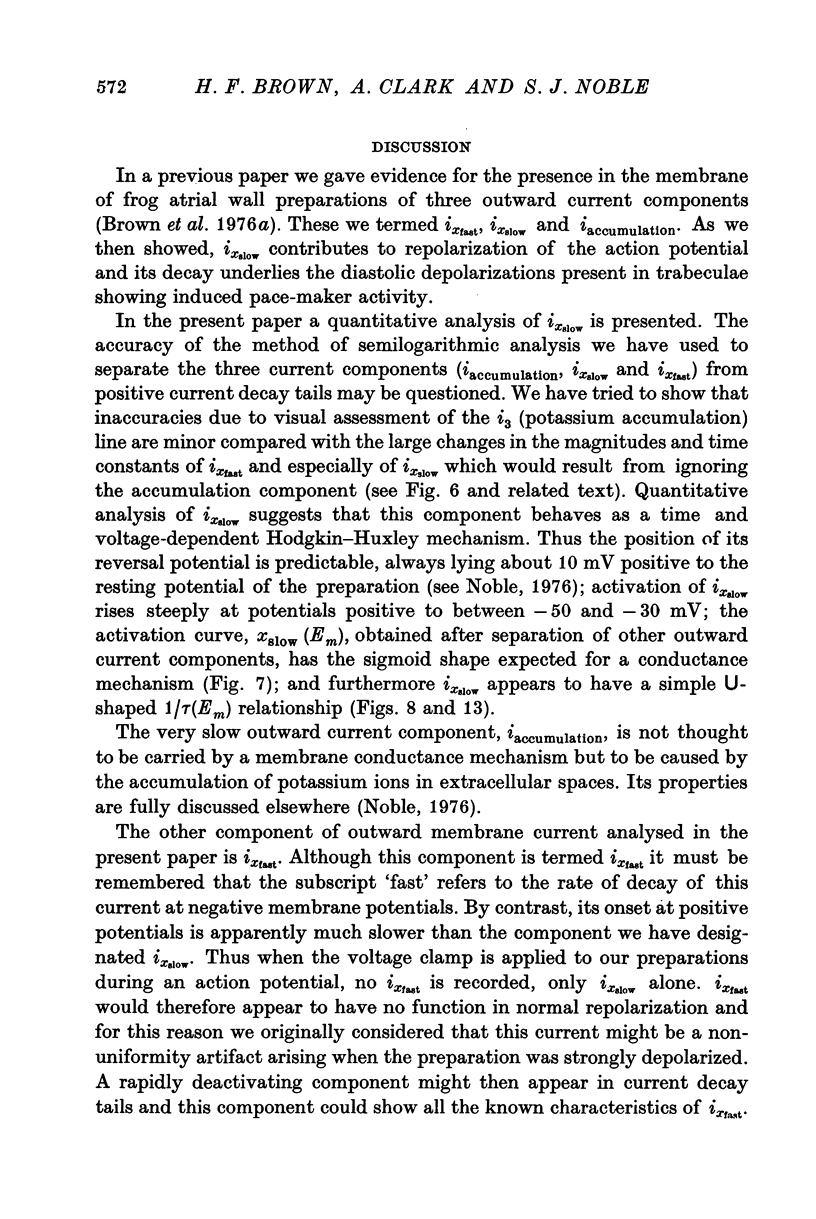
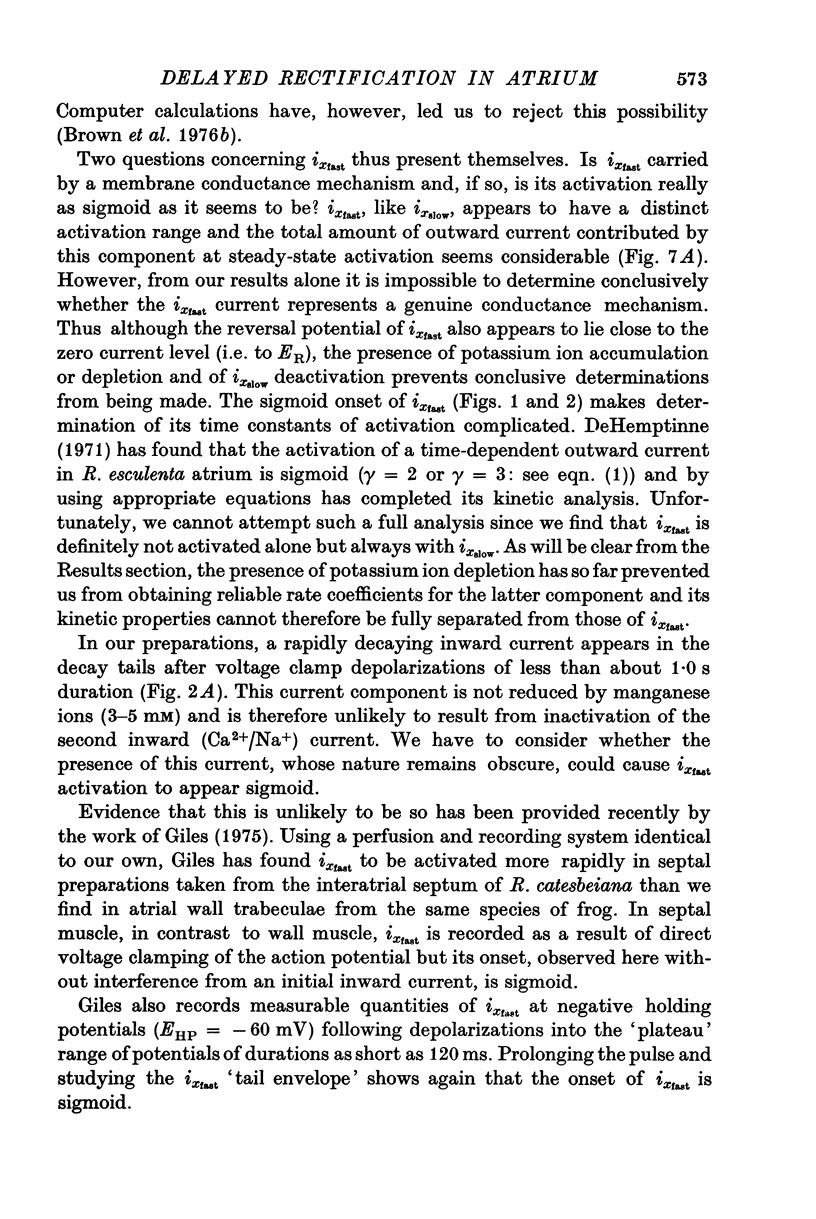
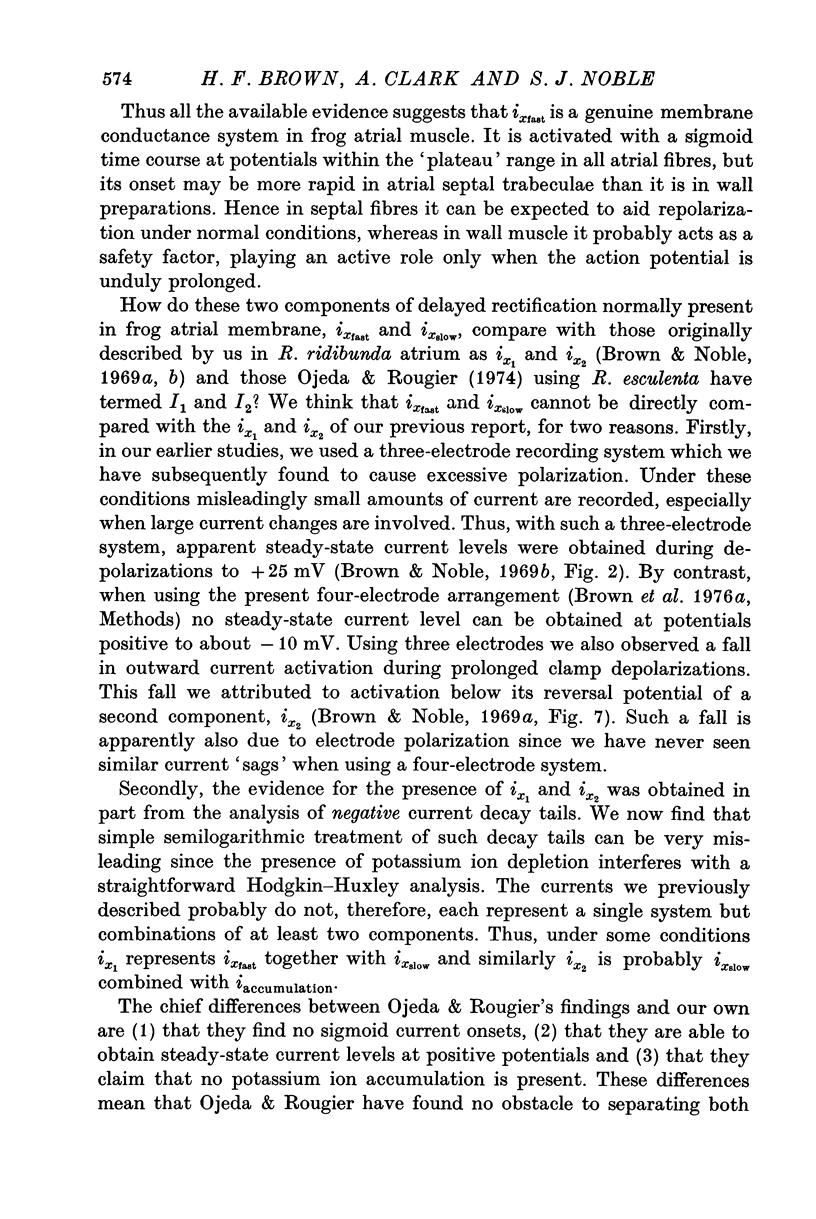
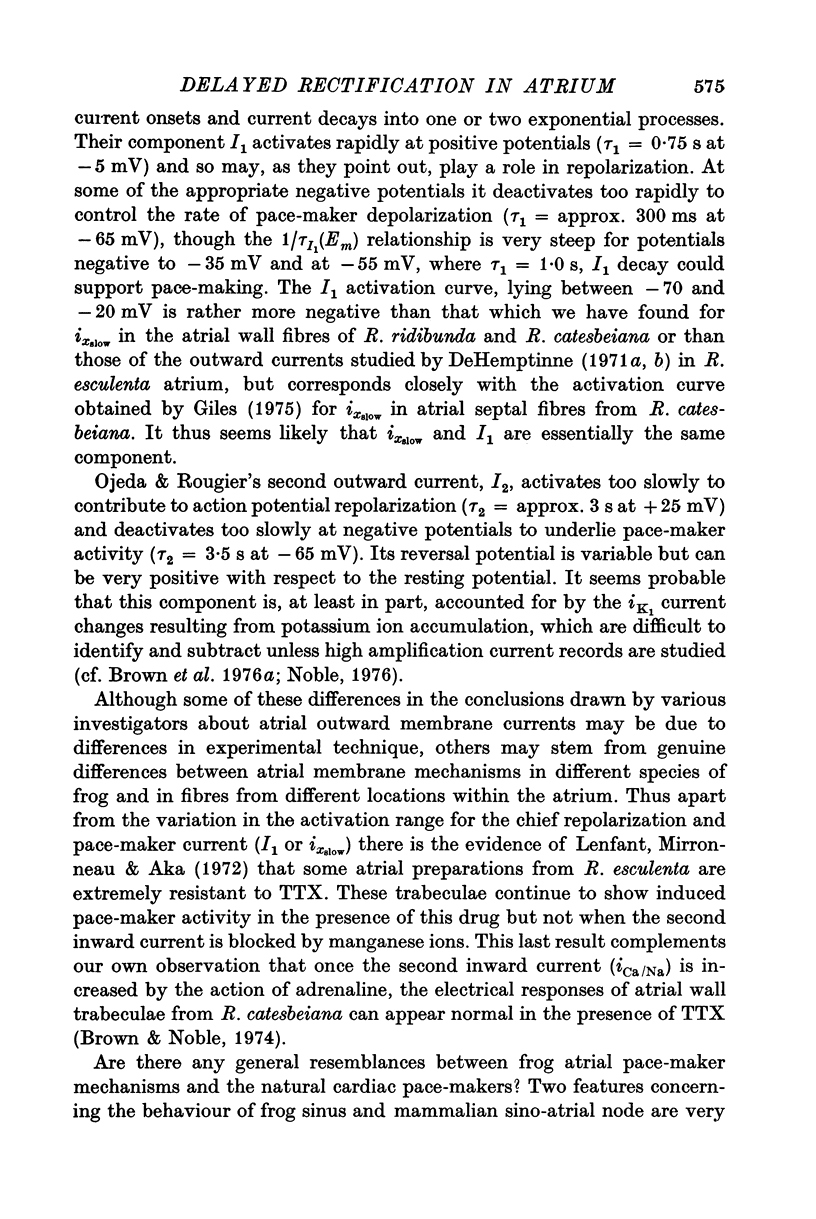
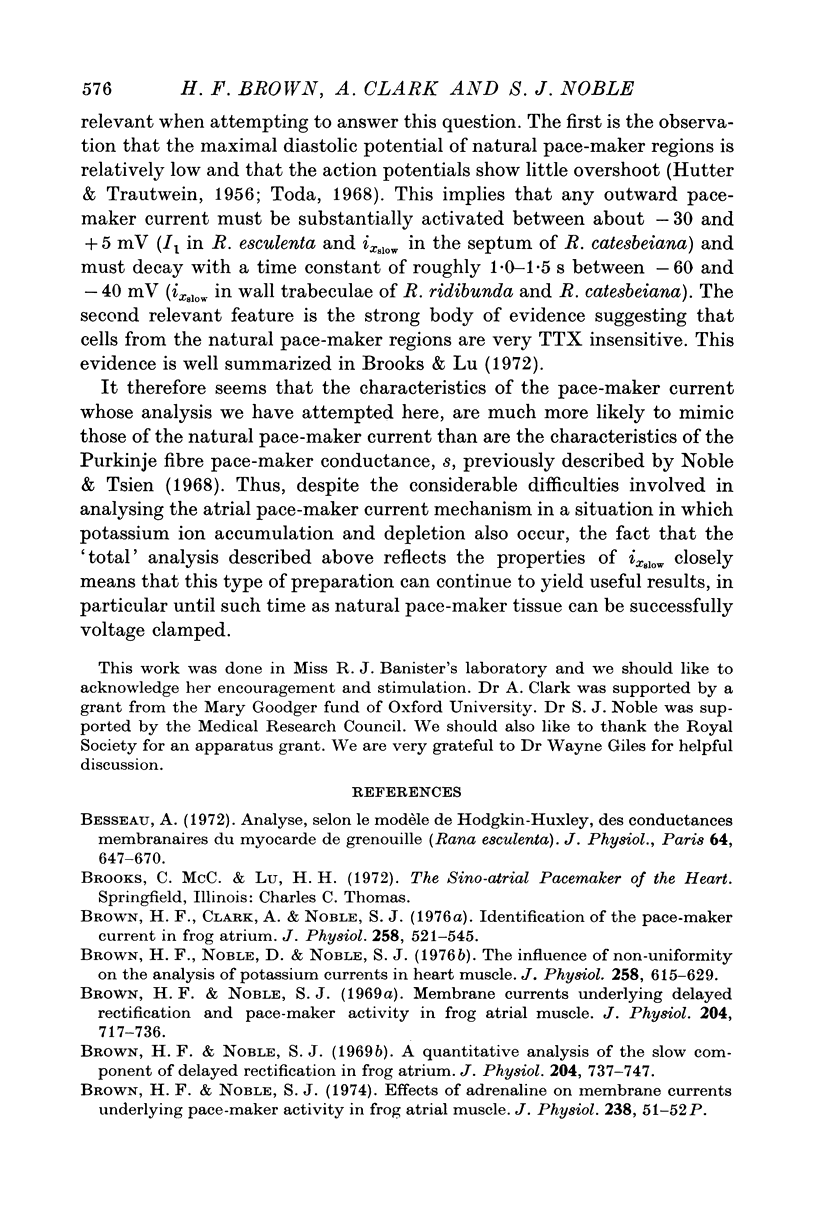
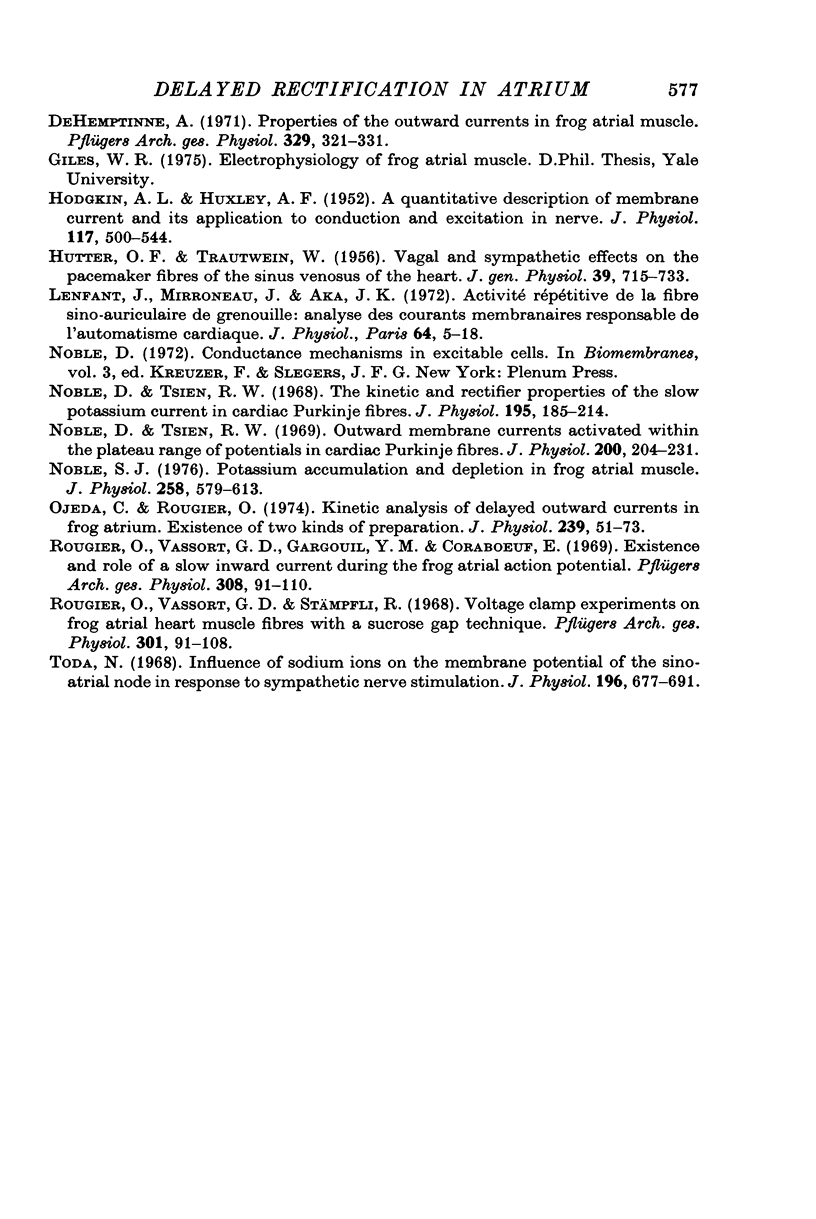
Selected References
These references are in PubMed. This may not be the complete list of references from this article.
- Besseau A. Analyse, selon le modèle de Hodgkin-Huxley, des conductances membranaires du myocarde de grenouille (Rana esculenta. J Physiol (Paris) 1972;64(6):647–670. [PubMed] [Google Scholar]
- Brown H. F., Clark A., Noble S. J. Identification of the pace-maker current in frog atrium. J Physiol. 1976 Jul;258(3):521–545. doi: 10.1113/jphysiol.1976.sp011434. [DOI] [PMC free article] [PubMed] [Google Scholar]
- Brown H. F., Noble D., Noble S. J. The influence of non-uniformity on the analysis of potassium currents in heart muscle. J Physiol. 1976 Jul;258(3):615–629. doi: 10.1113/jphysiol.1976.sp011437. [DOI] [PMC free article] [PubMed] [Google Scholar]
- Brown H. F., Noble S. J. A quantitative analysis of the slow component of delayed rectification in frog atrium. J Physiol. 1969 Oct;204(3):737–747. doi: 10.1113/jphysiol.1969.sp008941. [DOI] [PMC free article] [PubMed] [Google Scholar]
- Brown H. F., Noble S. J. Membrane currents underlying delayed rectification and pace-maker activity in frog atrial muscle. J Physiol. 1969 Oct;204(3):717–736. doi: 10.1113/jphysiol.1969.sp008940. [DOI] [PMC free article] [PubMed] [Google Scholar]
- HODGKIN A. L., HUXLEY A. F. A quantitative description of membrane current and its application to conduction and excitation in nerve. J Physiol. 1952 Aug;117(4):500–544. doi: 10.1113/jphysiol.1952.sp004764. [DOI] [PMC free article] [PubMed] [Google Scholar]
- HUTTER O. F., TRAUTWEIN W. Vagal and sympathetic effects on the pacemaker fibers in the sinus venosus of the heart. J Gen Physiol. 1956 May 20;39(5):715–733. doi: 10.1085/jgp.39.5.715. [DOI] [PMC free article] [PubMed] [Google Scholar]
- Lenfant J., Mironneau J., Aka J. K. Activité répétive de la fibre sino-auriculaire de grenouille: analyse des courants membranaires responsables de l'automatisme cardiaque. J Physiol (Paris) 1972;64(1):5–18. [PubMed] [Google Scholar]
- Noble D., Tsien R. W. Outward membrane currents activated in the plateau range of potentials in cardiac Purkinje fibres. J Physiol. 1969 Jan;200(1):205–231. doi: 10.1113/jphysiol.1969.sp008689. [DOI] [PMC free article] [PubMed] [Google Scholar]
- Noble D., Tsien R. W. The kinetics and rectifier properties of the slow potassium current in cardiac Purkinje fibres. J Physiol. 1968 Mar;195(1):185–214. doi: 10.1113/jphysiol.1968.sp008454. [DOI] [PMC free article] [PubMed] [Google Scholar]
- Noble S. J. Potassium accumulation and depletion in frog atrial muscle. J Physiol. 1976 Jul;258(3):579–613. doi: 10.1113/jphysiol.1976.sp011436. [DOI] [PMC free article] [PubMed] [Google Scholar]
- Ojeda C., Rougier O. Kinetic analysis of the delayed outward currents in frog atrium. Existence of two types of preparation. J Physiol. 1974 May;239(1):51–73. doi: 10.1113/jphysiol.1974.sp010555. [DOI] [PMC free article] [PubMed] [Google Scholar]
- Rougier O., Vassort G., Garnier D., Gargouil Y. M., Coraboeuf E. Existence and role of a slow inward current during the frog atrial action potential. Pflugers Arch. 1969;308(2):91–110. doi: 10.1007/BF00587018. [DOI] [PubMed] [Google Scholar]
- Rougier O., Vassort G., Stämpfli R. Voltage clamp experiments on frog atrial heart muscle fibres with the sucrose gap technique. Pflugers Arch Gesamte Physiol Menschen Tiere. 1968;301(2):91–108. doi: 10.1007/BF00362729. [DOI] [PubMed] [Google Scholar]
- Toda N. Influence of sodium ions on the membrane potential of the sino-atrial node in response to sympathetic nerve stimulation. J Physiol. 1968 Jun;196(3):677–691. doi: 10.1113/jphysiol.1968.sp008529. [DOI] [PMC free article] [PubMed] [Google Scholar]


